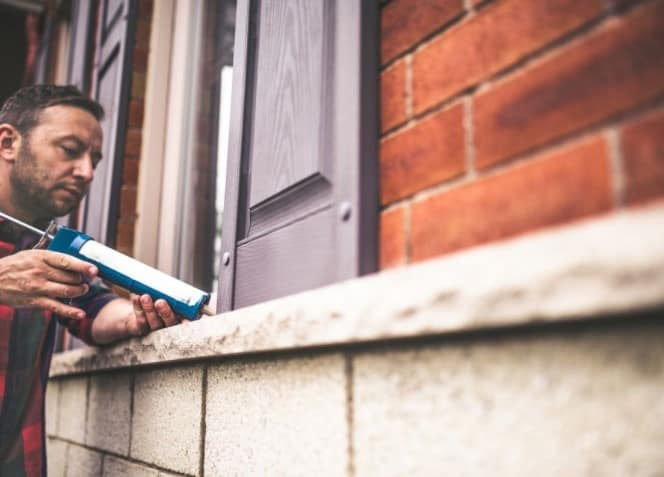Home Winterization Tips

Like ‘The Who’ Said, We Won’t Get Fooled Again
By Jason Jones
Messenger Reporter
EAST TEXAS – The state of Texas was treated to an eye-opening situation last winter when temperatures dipped well below normal for an extended period causing turmoil everywhere. Mild winters are the custom in this region, so many people were caught off guard. This winter many are preparing ahead of time to be ready should such an occasion repeat itself.
Below are a few suggestions to not only keep your home and family ready for bad weather but contribute to lower energy costs as well.
1) Add Attic Insulation
The most effective use of insulation is in the attic.
Unfortunately, most homes have either no insulation or too little insulation in the attic. According to the U.S. Environmental Protection Agency, attics should have a minimum of R-38 insulation, which is typically between 10 and 14 inches deep.
A properly insulated attic floor will prevent heated air in the rooms below from flowing into the attic. It’s equally important to caulk all ceiling penetrations—holes around pipes, ducts, and wires—and to place an insulated cover over the attic hatchway or stairway.
2) Caulk Cracks
One of the simplest—and most effective—ways to stop cold-air infiltration is to plug up holes, cracks, and open seams around the exterior of your house.
Use a high-quality acrylic-latex caulk or expanding-foam sealant and fill any air-leaking gaps. Pay particular attention to the areas around the outside of windows, doors, hose faucets, and where the siding overlaps the foundation.
3) Install Electrical Outlet Gaskets
It doesn’t seem possible, but a surprising amount of cold air blows in around electrical outlets. And since even a modest-size home has dozens of outlets, the heat loss is significant.
An easy, affordable way to seal up drafty outlets is with foam-rubber outlet gaskets. Simply remove the outlet cover plate, press the gasket over the electrical outlet, then replace the cover.
4) Install a Programmable Thermostat
If your family keeps a regular schedule, meaning you come and go at somewhat regular times each day, install a programmable thermostat, which can be adjusted to suit your lifestyle.
For example, you can preset it to automatically turn on the heat in the morning as everyone is getting up for work and school, and then lower the heat once everyone has left the house. And you can program the heat to come back on just before everyone gets home later in the day, and then shut it back down at bedtime. Most programmable thermostats also have weekend and vacation settings.
And if you buy a smart programmable thermostat, you’ll be able to control it from anywhere in the world using your phone or tablet.
5) Replace Door Weather Stripping
Inspect the weather stripping around all exterior doors to ensure that it’s in good shape and not ripped, crushed, or missing. Then, close the door and check for air-leaking gaps around all four edges of the door. Peek under the door. If you see sunlight shining through, you’ll need to either raise the threshold or install a door sweep.
6) Reverse Ceiling Fans
Ceiling fans aren’t only useful in summer. Most fans have a switch—either on the motor housing or remote control—that allows you to reverse the fan-blade rotation.
In summer, the blades rotate counterclockwise to blow down cooling breezes. But in winter, reverse the blade rotation so they blow up. That way, the fan will force warm air trapped at the ceiling down into the room.
7) Check Your Windows
Gaps around the window frames and doors can allow air to leak inside, so make sure the weatherstripping is secure. If not, self-sticking weatherstripping is a useful tool for helping windows close more tightly.
8) Hang Insulated Window Treatments
Even the best, tightest-sealing windows feel a bit cold in winter. To make rooms feel warmer, cover windows with insulated blinds or thick, quilted drapes.
9) Get Your Faucets Ready
Allow a small trickle of cold water to run from your faucet. This will keep water moving in your pipes, preventing freezing.
Open under-sink cabinet doors to keep warm room air circulating around the pipes.
10) Time to Stock Up
- Ice scraper
- Flashlights and extra batteries
- Weather radio
- Emergency car kit (extra blankets, radio, ice scraper, car charger, first aid kit, jumper cables)
- Water and food that doesn’t require cooking or preparation (dried fruit, granola bars, crackers, etc.)
- Extra pet food
Jason Jones may be reached via email at [email protected]






